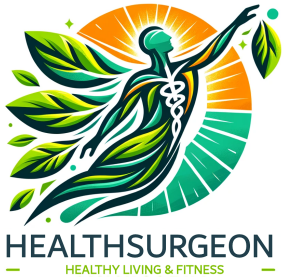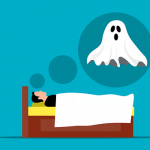There are no warning signs. There are no symptoms. You don’t feel it. It’s insidious. It’s called hypertension or high blood pressure. The Global Burden of Disease Study found that people with high blood pressure have the highest risk of ill health and early death.
Having high blood pressure puts you at a higher risk not just for cardiovascular diseases or heart attack, but also for problems with your brain, kidneys, and eyes.
Most people are unaware of the risk they are in for this condition because it is symptomless.
- If your blood pressure is consistently above 140/90, it is considered high.
- An ideal blood pressure lies between 90/60 and 120/80.
- Heart rate is a measure of how much blood the heart pumps out in one minute.
Your blood pressure will increase as you age, gain weight, become less physically active, and consume more alcohol and salt. Even if you have no other risk factors for high blood pressure, you may be advised to take medication to keep your blood pressure in the healthy range if it runs in your family.
Although avoiding high salt foods is one way to keep your blood pressure under control, it is not the only way. You need to make a lot of changes to your lifestyle and stick to a diet that will help control your blood pressure.
The scientists found that people who consume more fruits, vegetables and whole grains had blood pressure levels that were lower than those who didn’t consume as many of these healthy foods.
DASH was created as a result of this research. The DASH diet has become the most popular diet for people with high blood pressure. Other BP-friendly diets are based on the same principles.
High Blood Pressure Symptoms
Many people do not experience any symptoms. This is why it is important to have your doctor check your blood pressure.
- Headache
- Dizziness
- Impaired Vision
- Failing Memory
- Shortness of Breath
- GI (Gastrointestinal) Disturbances
- Nosebleeds
- Flushing
- Chest pain
- Blood in the urine
Risk Factors for High Blood Pressure
1. Gender
High blood pressure is more common in men up until the age of 64.
2. Age
As you age, your risk of developing high blood pressure increases. As we age, our blood vessels gradually lose some of their elastic quality, which can contribute to increased blood pressure. Children rarely have high blood pressure. When they do it usually is an indication of another problem.
3. Heredity
If you have high blood pressure, it’s more likely that it runs in your family. High blood pressure is more common among black people.
4. Stress
Although stress does not cause high blood pressure, it can lead to unhealthy habits that can in turn increase blood pressure. These habits include eating poorly, smoking, drinking alcohol, sleeping poorly, and not getting enough exercise.
5. Obesity
If you are overweight, you are 2 to 6 times more likely to develop high blood pressure than someone who is not. The percentage of men with high blood pressure is 38% for those with a BMI greater than 30 kg/meter square. The percentage of women with high blood pressure is 32% for those with a BMI greater than 30 kg/meter square.
6. Physical Activity
Less active persons are 30–50% more likely to develop high blood pressure than their active counterparts. Exercise and physical activity help you maintain a healthy weight. Inactive people have higher resting heart rate. A low resting heart rate can help you assess your overall heart health.
7. High Cholesterol
High cholesterol is found in more than half of people who also have high blood pressure.
8. Chronic Kidney disease (CKD)
High blood pressure may be caused by kidney disease, and high blood pressure can also cause further damage to the kidneys.
9. Pregnancy
Being pregnant can lead to temporary high blood pressure during the time you are pregnant.
10. Unhealthy Habits
Drinking too much alcohol, use of tobacco products including vaping and eating too much salt can all effect your blood pressure.
Diet Principles for High Blood Pressure
Dietary recommendations for lowering blood pressure, such as the Dietary Approaches to Stop Hypertension (DASH) diet, focuses on reducing your intake of fat, sodium, and alcohol. The DASH diet specifically recommends limiting your daily sodium intake to 2,300 milligrams or less, and eating plenty of fruits, vegetables, and low-fat dairy products.
If you follow the DASH diet for two weeks, your systolic blood pressure (the top number of a blood pressure reading) will be 8–14 points lower.
A diet with more low-fat protein sources, whole grains, fruits, and vegetables is recommended. The DASH guidelines also suggest eating more foods rich in potassium, calcium, and magnesium. This will help to lower blood pressure by keeping blood vessels healthy and relaxed.
The guidelines also recommend no more than:
- Five servings of sweets per week
- One drink per day for women
- Two drinks per day for men
Track What You Eat
Avoid Salt (Sodium)
A high-sodium diet increases blood pressure in many people. If you want better blood pressure control, you should eat less sodium.
- Use a food diary to keep track of the salt in the foods you eat.
- Break the habit of automatically reaching for your salt shaker. Table salt is about 40% sodium, according to the American Heart Association. So avoid adding salt to foods at the table.
- Read the labels when shopping. Look for lower-sodium cereals, crackers, pasta sauces, canned vegetables, or any foods with low-salt options.
- Select foods that have 5% or less of the “Daily Value” of sodium.
- Avoid foods that have 20% or more Daily Value of sodium.
- Eat fewer processed, canned, and packaged foods. Packaged, processed foods account for most of the sodium in people’s diets. If you prepare your own food, you control what’s in it.
- At restaurants, ask about salt added to food. Many chefs will skip or cut back on salt if you ask.
- If your restaurant posts the nutrition facts for its dishes, check how much sodium is in a serving. There may be lower-sodium options on the menu.
- Use salt-free seasonings.
- If you need to use salt while cooking, add it at the end. You’ll need to add less.
Limit Sugar
Sugar contains calories but no nutritional value.
There are many different types of sugar, including white sugar, agave, sucrose, high fructose corn syrup, honey, molasses, brown sugar, turbinado, raw sugar, maple syrup, date sugar, malt syrup, pancake syrup, fruit juice concentrates, and dextrose.
A teaspoon of sugar is approximately equal to 4 to 5 grams.
The American Heart Association recommends that most adults consume less than 20 grams of sugar per day, with men consuming less than 36 grams. A can of soda can have up to 40 grams, which is about 10 teaspoons, of sugar.
READ MORE: How Much Sugar Is Safe To Eat?
Avoid Nitrates
Sodium nitrate is most commonly used as a preservative for salty, processed meats like bacon and deli selections. This preservative prevents the growth of bacteria and other microorganisms. If you consume large amounts of these substances, you may be more likely to develop serious cardiovascular problems or cancer.
Avoid Trans Fats – Partially Hydrogenated Oil
Trans fats can cause heart disease and make it harder for the body to use insulin. Trans fats are the most dangerous type of fat, especially if you are overweight.
If a food has “partially hydrogenated oil” in the ingredients list, it contains trans fat. Even food that is labeled as having “0 trans fats” can actually have up to half a gram of trans fats.
Unhealthy fats are found in processed snacks like crackers, chips, and cookies, as well as fried foods and other foods that use vegetable shortenings and margarine.
READ MORE: Coconut Oil Health Benefits
What to Eat
Potassium, magnesium, and fiber can help regulate blood pressure. Fruits and vegetables contain high amounts of potassium, magnesium, and fiber, and low amounts of sodium.
Stick to whole fruits and veggies. Juice is less helpful, because the fiber is removed. These foods contain magnesium, which is good for you.
To increase the amounts of natural potassium, magnesium, and fiber you take in, select from the following:
- apples
- apricots
- bananas
- beet greens
- broccoli
- carrots
- collards
- green beans
- dates
- grapes
- green peas
- kale
- lima beans
- mangoes
- melons
- oranges
- peaches
- pineapples
- potatoes
- raisins
- spinach
- squash
- strawberries
- sweet potatoes
- tangerines
- tomatoes
- tuna
- yogurt (fat-free)
Starting The DASH Diet
The Dietary Approaches to Stop Hypertension is a diet that is rich in fruits, vegetables, whole grains, fish, poultry, nuts, legumes, and low-fat dairy. The foods on this list are rich in nutrients like potassium, magnesium, calcium, fiber, and protein.
The DASH diet is beneficial for lowering blood pressure because it contains less salt and sugar in comparison to the average American diet. The DASH diet eliminates sugars, sugary drinks, fats, red meat, and processed meats.
The DASH diet significantly reduces the risks of coronary artery disease and stroke in women. To start the DASH diet, follow these recommendations (based on 2,000 calories a day):
- Grains: 7-8 daily servings (serving sizes: 1 slice of bread, 1/2 cup cooked rice or pasta, 1 ounce dry cereal)
- Vegetables: 4-5 daily servings (1 cup raw leafy greens, 1/2 cup cooked vegetable)
- Fruits: 4-5 daily servings (1 medium fruit, 1/2 cup fresh or frozen fruit, 1/4 cup dried fruit, 6 ounces fruit juice)
- Low-fat or fat-free dairy products: 2-3 daily servings (8 ounces milk, 1 cup yogurt, 1.5 ounces cheese)
- Lean meat, poultry, and fish: 2 or fewer servings a day (3 ounces cooked meat, poultry, or fish)
- Nuts, seeds, and legumes: 4-5 servings per week (1/3 cup nuts, 2 tablespoons seeds, 1/2 cup cooked dry beans or peas)
- Fats and oils: 2-3 daily servings (1 teaspoon vegetable oil or soft margarine, 1 tablespoon low-fat mayonnaise, 2 tablespoons light salad dressing)
- Sweets: less than 5 servings per week. (1 tablespoon sugar, jelly, or jam)
Please consult your physician or dietitian to learn more about the DASH diet and how to start incorporating it into your lifestyle. They can advise you on the number of calories you need per day to maintain or achieve a healthy weight. The DASH guidelines can help you plan healthy meals with foods you enjoy.
Lifestyle Remedies for High Blood Pressure
A healthy lifestyle can help you to avoid the factors that can cause hypertension. Here are some of the most common home remedies that may help you beat the blood pressure:
In order to improve your lifestyle, you need to limit your daily intake of sodium (salt). Along with this, reduce your fat intake as well. Instead, have more fruits, vegetables, and whole grains. If you follow the DASH eating plan, you may be able to lower your blood pressure.
Exercising helps you maintain a healthy weight, which in turn helps keep your blood pressure within limits. You can go for either a high-intensity aerobic exercise for 60–90 minutes or moderate-intensity aerobic exercise for at least 120–150 minutes per week. Even brisk walking is good to start with.
If you’re feeling stressed, your blood pressure may rise. It is important to manage your stress levels by doing things like exercising, listening to music, taking up a hobby class, or meditating.
A healthier lifestyle that includes quitting smoking is the best way to manage high blood pressure. The chemicals found in tobacco smoking are known to cause damage to the tissues of the body as well as harden the walls of blood vessels.
If you want to lead a healthier lifestyle, you need to give up alcohol. Alcohol can raise blood pressure.









